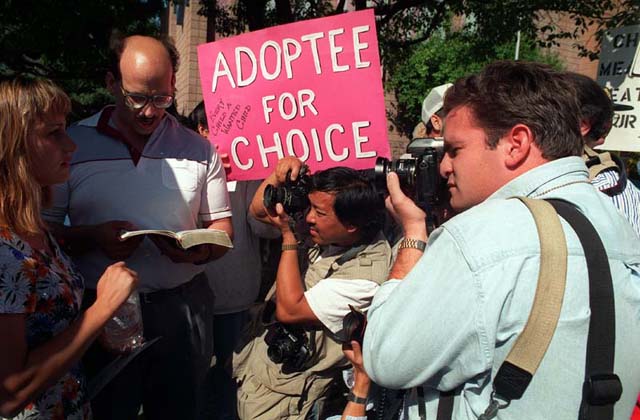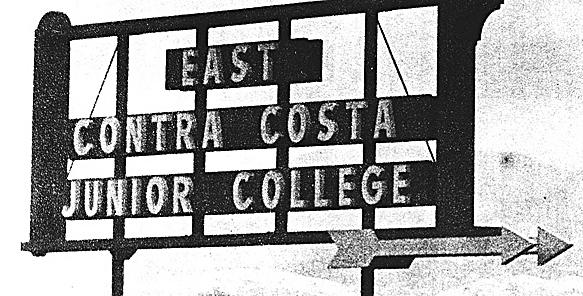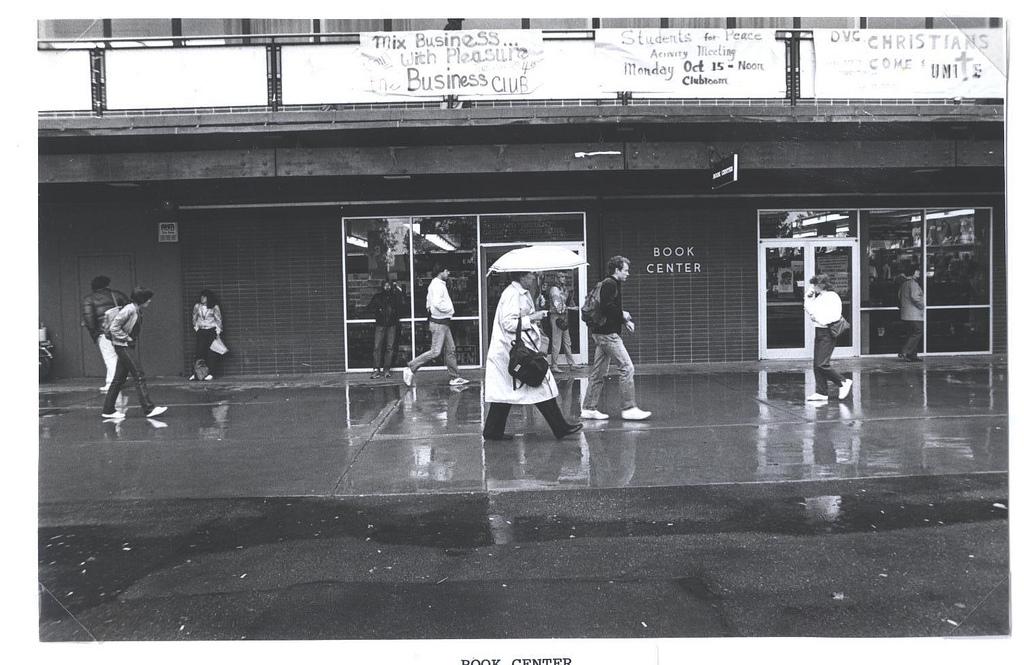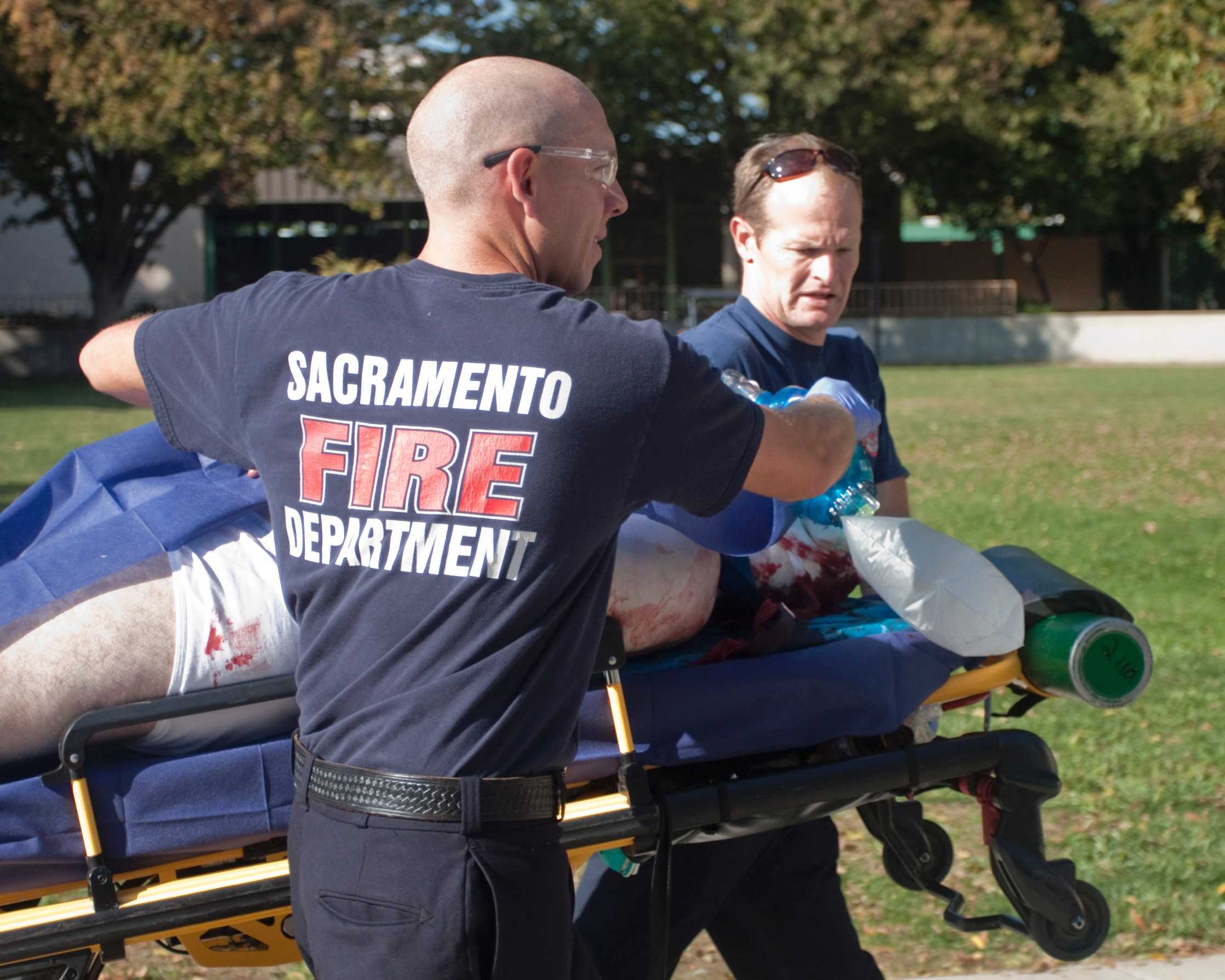60 years of Inquirer history, Part 2: Plane crash was biggest story of 1980s
(The Inquirer 2009)
October 27, 2009
On a foggy night two days before Christmas 1985, a twin-engine Beechcraft Baron airplane slammed through the roof of Macys department store in Concord’s Sun Valley Mall.
Six people were killed, including Brian Oliver, 23, a DVC student and former “Enquirer” reporter, who was a passenger in the plane.
On the ground, Patricia Larson, 45, a DVC student and current “Enquirer” reporter, was seriously burned and among the nearly 100 people injured. She died later in the hospital.
Almost 25 years later, English professor Jim Jacobs, the Enquirer’s faculty adviser at the time, cannot talk about the students he lost that night without tearing up.
“I’m still a little emotional about it,” he says.
By the time Jacobs became adviser in 1976, the student newspaper had morphed from the “East Contra Costa Junior College Newsletter” in 1950 to the” Viking Reporter” in 1955 and the “Enquirer” in 1972.
“It was hard work, but the fun part was doing it and getting to know each other,” Jacobs recalls of his decade’s worth of work on the “Enquirer.”
In the late 1970s and mid-1980s the “Enquirer” covered a slew of exciting stories including a DVC student who stole $3 million setting a record for the most amount of money stolen from a Brinks armored vehicle.
“He and a partner concocted a scheme…and they nearly made it out of the country,” Jacobs says.
There were also controversial stories including scandals within the student government, feminist demonstrations and protests against nuclear armament.
“If there is any single unchanging reality on this campus it’s the level of corruption in the Associated Students over the years,” Jacobs says. “It’s always a good experience for students to see that.”
Reporting on stories people would rather have kept under wraps gave student reporters a window into the world of professional journalism
“It was a constant pressure to try to remain a newspaper and have integrity and deal with the tension of not being liked or understood,” Jacob recalls. “If a negative drama review appeared the drama teacher would hate us. If a story critical of the administration appeared administrators would take a dislike.”
Staffers spent countless hours together in the newsroom, even hanging out between their other classes, and at the end of every semester they would hold a party.
“Jackie Pels, who joined the newspaper in 1976 after taking Jacobs’ introductory news writing course, says, “I loved [the class,] and he conned me into working on the paper.”
Now retired after many years as an editor at the “Contra Costa Times” and the “San Francisco Chronicle,” Pels owns a publishing company, does freelance editing and has written three books of non-fiction.
A mother of six and in her early 40’s when she joined the “Enquirer,” Pels says it was a chaotic time.
“I madly rode my bike out to DVC while [my youngest son] was in nursery school, took one class and then would madly ride my bike back,” she recalls.
One of the highlights was an assignment to cover Dennis Banks, head of the American Indian Movement, when he spoke at DVC.
A picture taken of her and Banks during her interview remains a treasured item.
Pels has remained close with her former adviser, attending his wedding and currently editing his coming-of-age novel scheduled to be published by the end of the year.
“I so much admired him,” Pels says. “He managed a diverse group of us, the paper was good and he himself is such a good writer.”
In those days, “Enquirer” stories were delivered to the campus typesetter, who retyped the copy and headlines on a machine called a “Veritype.”
The photographic paper then went through a developer process. The students returned to the lab with columns of type and the headlines, which were run through a waxer and “pasted up” on the page.
From 1972 to 1984, one of Carol Yacorzynski’s duties in DVC’s central services was typesetting the Enquirer.
Yacorzynski, who went on to own her own design company, says her favorite part was reading the stories before they were published.
“It was always interesting,” she says, “to see firsthand how the students were learning their craft and to see how things changed from the beginning of the semester to the end.”
After Jacobs left the paper in 1986, he continued at DVC as an English professor, returning to the student newspaper for a semester in 1991 when his predecessor, Barbara Sawyer, took sabbatical leave.
It was during this time that David Lowe-Rogstad joined the staff as a photographer, moving up to photo editor.
“[Jacobs] set the tone for the group we had, giving us a lot of lee way to take some chances,” he says. “We were responsible for the outcome.”
Though the student newspaper changed over the years with advancing technology, t one thing remained constant: From the six pioneering students who put together the first newsletter to the enthusiastic group that put out the paper during Jacobs’ return for a semester in 1991, deep friendships developed from working together on a shared passion.
“It definitely was not forced camaraderie,” Lowe-Rogstad says of his time on staff. “[And] we helped each other out professionally as we moved on in our careers.”









































































